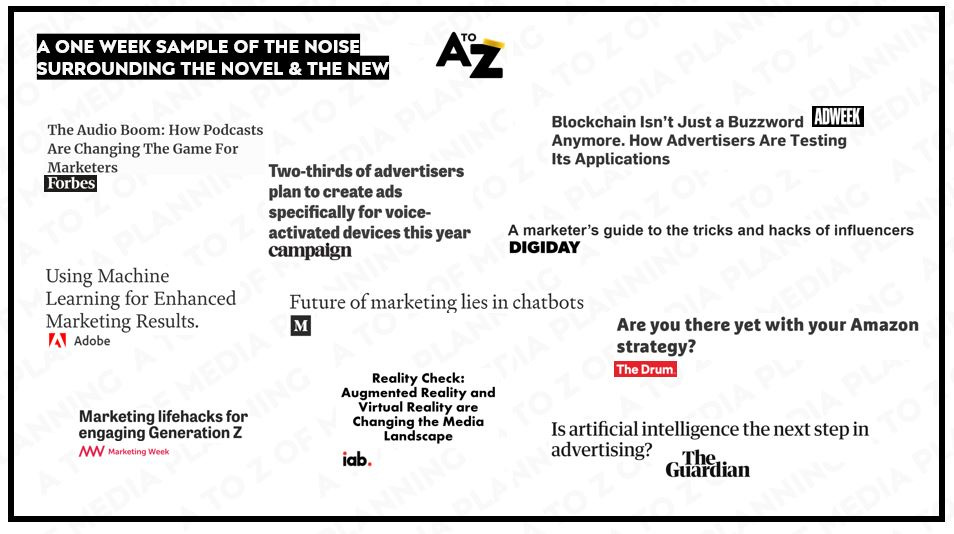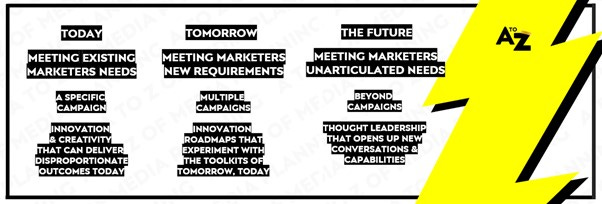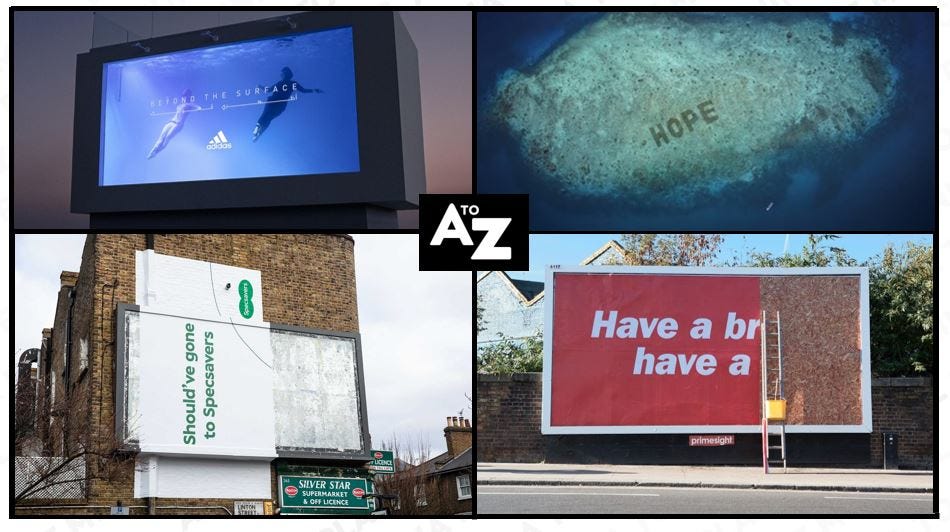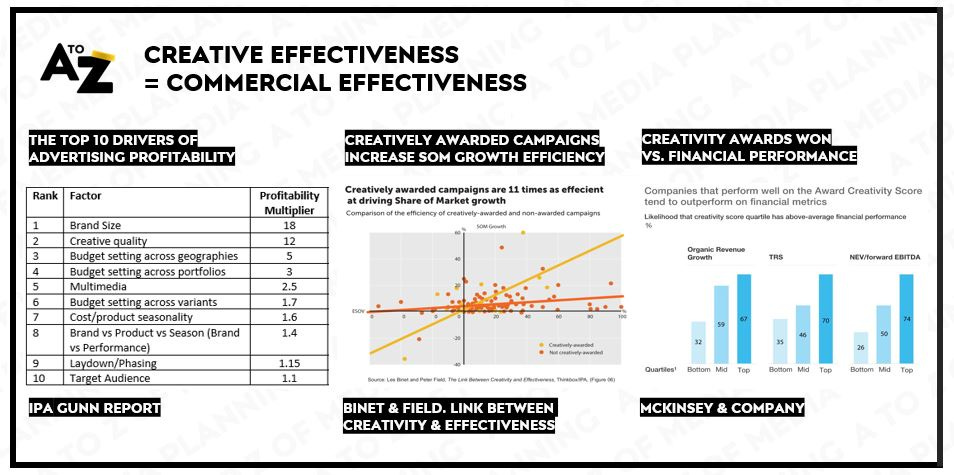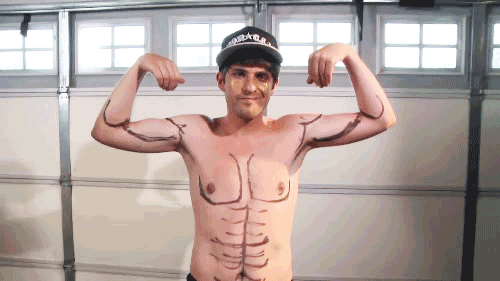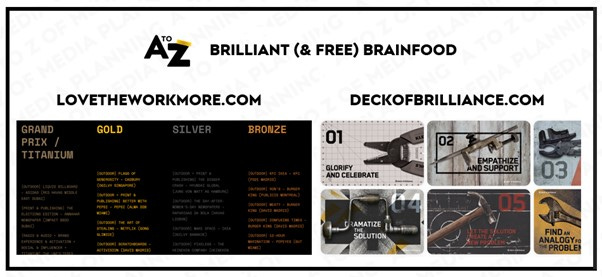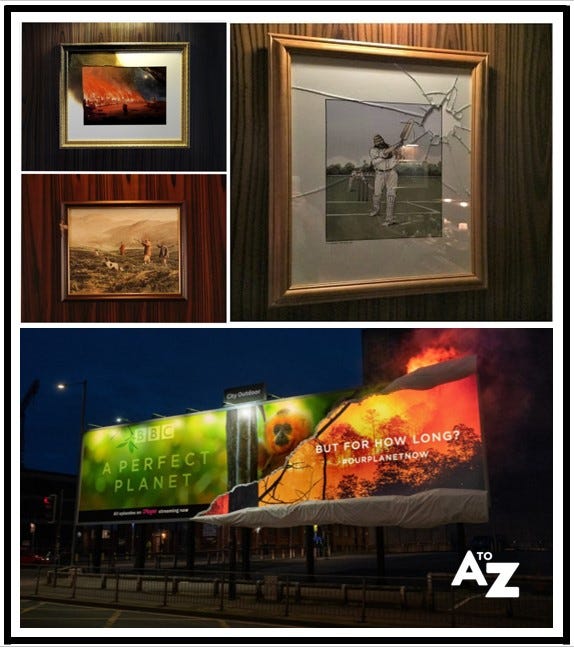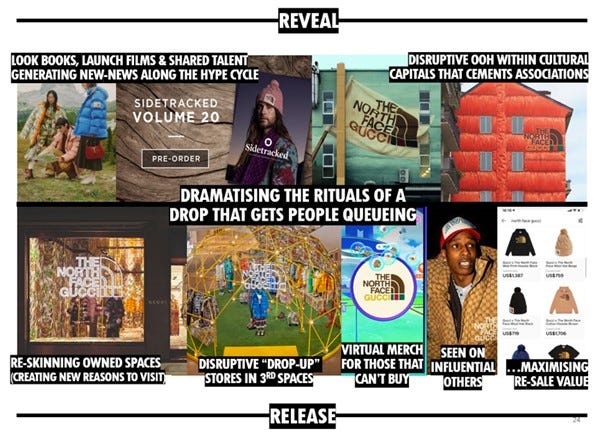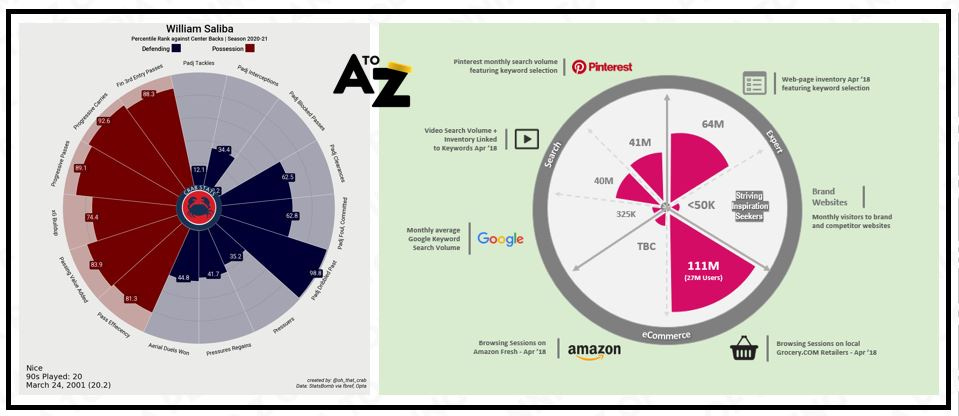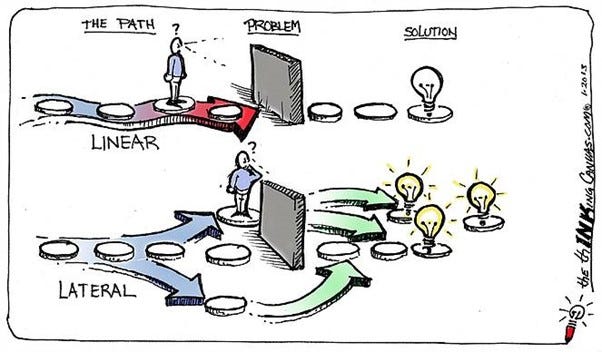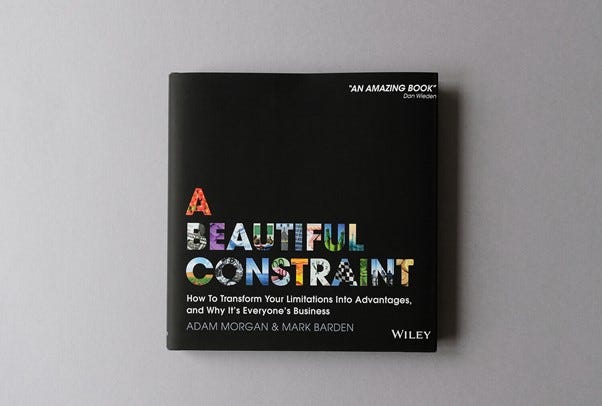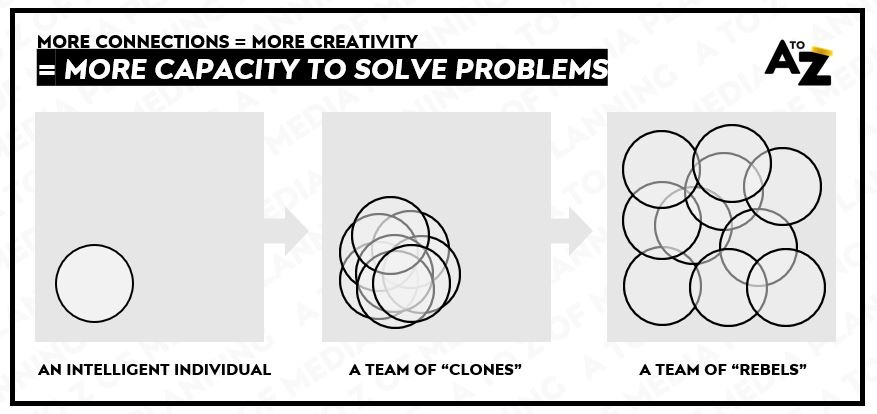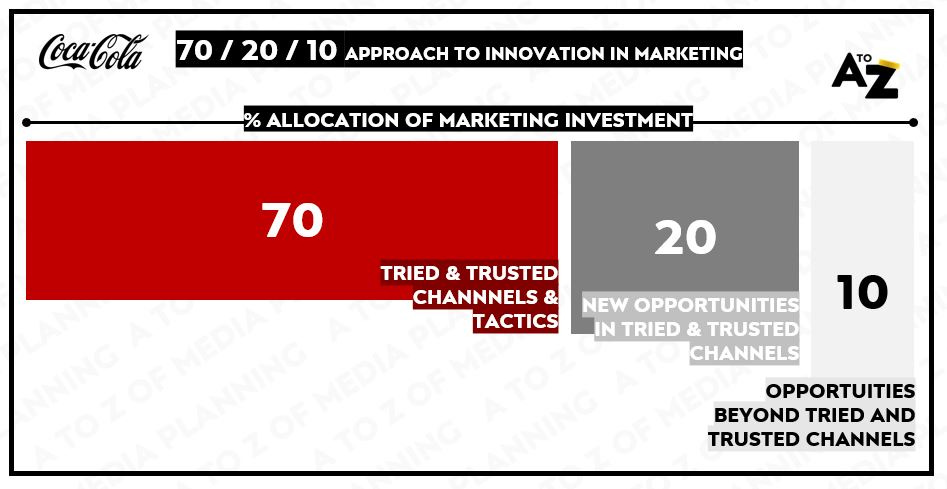When thinking about what to write for this post there were so many choices along the lines of insight, ideas and imagination that I’ve got plenty of leftovers to weave into some of the more difficult letters coming in the alphabet later down the line.
But given such a large chunk of my career to date has been in innovation roles, I’m going to use this post to walk through the way I’ve seen innovation in media and marketing playing a vital role for brands and share some ways you can go about unlocking it for your clients.
Hence I is for… Innovation
I’ll share some ways to frame the importance of innovation and creativity for clients or colleagues that aren’t so keen.
I’ll offer some sources and resources to help you unlock it for different types of tasks more often.
I’ll focus on the ways you can train your creative muscles.
But first…WTF is Innovation?
A great ice-breaker exercise in a workshop is to ask for people’s definition of something.
1. Get people to write down their definition of the theme of the day on a piece of paper
2. Get them to scrunch it up and throw it at you or towards a target at the same time
3. The ones closest to the target or hit you in the head first get read out first
4. Chuck in a couple of rogue answers to lighten the mood
The diversity and difference of opinion created by getting people to write it down, rather than say it out loud and be swayed by others opinions, becomes a useful talking point and reference point for following exercises that day.
Asking about “innovation” always leads to a random bunch of answers.
Some give a techy angle, some are more pragmatic, some talk about lightbulbs and beanbags etc etc
From my experience the most innovative or creative people don’t necessarily have those words in their job title, or even listed as characteristics in their job spec, it’s just evident in the way they engage and see opportunity in the world around them.
Like most people a thought is triggered in their minds along the lines of… “there’s got to be a better way”.
However most people just think it, but don’t or can’t do anything about it.
They continue to ride horses and carriages. Burning candles and coal.
Using whichever channels or the ways of using those channels that have worked in the past even though ad-stock generation per ad-impression served has declined by c. 20% over recent years.
Innovators find a better way of doing something
“Innovators” take ownership of a task, a problem, an irritation or a situation that presents itself and work their way towards a new or potentially better way of doing things – most importantly being able to bring others along for the ride.
“What if we did it this way?” then “How might we do it?” then “How will we know if it worked or not?”.
But what of innovation in advertising and communications?
A discipline with an oversupply of opinion and grift on the novel and the new, coupled with an undersupply of coherent action.
This is an old chart now, but gives a sense of how much B.S. our colleagues and clients have to wade through each and every week.
Our jobs as media planners and practitioners is to help clients and colleagues see what’s a genuine opportunity vs. opportunist make-believe and offer sound choices about what they invest their time and money into.
A lovely example of this offered by James Whatley de-bunking some of the myths around the metaverse whilst offering interesting thought-starters at the same time.
Going back to first principles the crowd (A.K.A Wikipedia) sees innovation as…
“new ideas, devices or methods”
“the application of new ideas, devices or methods to create better solutions to meet existing market needs, new requirements or unarticulated needs.”
Switch out “market” with “marketers” and you get to a pretty neat summary of the types of work innovation functions I’ve been part of and responsible for building get on with.
Not everything for sure, but the main things.
Always with the aim of helping clients create more effective marketing and communications, more often, or enable them to continue doing so in tomorrow’s world.
It’s an important distinction.
Be that innovating for today and a campaign that’s being developed.
Using various forms of innovation and creativity in media to deliver better potential outcomes than via conventional methods.
Be that innovating for tomorrow.
To align on areas to experiment, test and learn and see whether new opportunities to connect brands with audiences have the potential to be more effective than what is already known.
Be that innovating into the future.
To open up clients or colleagues minds as to what is coming down the line, and preparing for that future state accordingly.
Which just so happens to offer a useful framing for the rest of this post.
Let’s start to expand with the most regularly available opportunity to innovate, the media plan.
Innovating for today; within a specific campaign
Sitting in a media agency our core service is the planning, the buying, the measurement and reconciliation of media plans.
Media strategy and planning is a discipline with a heavy emphasis on logic, but the effectiveness of what we do can be significantly improved with a little drip of magic.
Tens of thousands of plans are briefed, planned, signed off and implemented across ad-land each and every day.
Every line on every plan, represents an opportunity to follow what we know is likely to be effective OR potentially break free from convention and search for something that might work even harder.
Be that as straight-forward as testing a new targeting opportunity, a new ad-format, or a new measurement capability that’s on offer, or something more expansive that has the potential to make people sit up, take notice and get them talking like some of these examples below.
Why is breaking from convention so important?
As humans evolution has hardwired us to take more notice of the novel or the new, to what stands out as different, going back to our times in the cave where we encountered other creatures that represented potential threats, mates or meals.
What sticks out, is more likely to be processed, remembered, recalled and acted upon.
Be that a billboard with a ladder on it, or Facebook’s latest CTRL+C & CTRL+V to lift the TikTok or Snap UX and subsequent ad-experience into their suite of apps.
An argument made brilliantly by Dave Trott here across 3 very entertaining parts.
IMPACT → COMMUNICATION → PERUSASION
This link between “creative impact” and commercial “persuasion” isn’t just common sense, it’s empirically proven time and again, from a variety of sources, for any of your clients or colleagues that may be suspicious of how important creativity is in our world.
That’s all well and good, but how can you unlock your own superpower of innovation & creativity for clients or colleagues on your next campaign?
Training your creative muscles
There is no magic process, formula or way of working that inevitably leads to more creative or innovative solutions.
Everyone gets to thoughts and ideas in different ways.
But there are some things you can do that can give you a better chance of getting to more interesting ideas.
These two methods are by no means exhaustive, but I find the most helpful and useful in skilling-up young planners I work with.
1. Immerse yourself in the creativity of others
There is no such thing as a new idea, especially in our line of work.
New ideas are simply re-mixes of others ideas, both from within ad-land and beyond.
To illustrate this one of the big winners from Cannes this year was a B2B campaign for Spotify, that to better connect with CMOs (their most important clients) they built a campaign to target just the CMOs of the USA’s largest advertisers in the form of a song they made for every CMO, listed on Spotify, then hand-delivered to them in the form of a framed platinum record to go above their desks.
Genius.
It’s a lovely idea, brilliantly executed, but it was totally ripped reminiscent of a Google activation two years earlier where they created a “biography of tomorrow” for each of the CEOs of their top target clients for Google’s Cloud Services, that told the happy story of what happened to their business and career having made the right choice to implement Google Cloud Services across their business.
Spotify simply re-mixed that idea in a way that suited their brand and business and what it was trying to achieve; in this case conversations with CMOs.
Reference points = ingredients for your next idea
By staying up to date with the best of what is being produced across our industry, you create reference points that can be recalled and re-mixed in new and novel ways like Spotify achieved for any briefs you might be working on in the future.
My go-to resources that are available to all are the Cannes Lions library, that has been kindly re-built without a paywall here as well as this website called DeckOfBrilliance.COM that has 52 different jumping off points for brands to say or convey things, each with associated case study videos that demonstrate how others have done just that.
Bravo to the instigators and curators of these wonderful tools.
Both are a cheat-code to help anyone that wishes to spend some time with them, to up their understanding of what good looks like and give hundreds of potential jumping off points for your own work.
Don’t be afraid to bring what you’re into, into your work too
As well as immersing themselves in the creative output of our industry, the most naturally creative or innovative people I come into contact with put their passions from outside of work, into their work as well.
I enjoy contemporary art, I’m definitely no art historian, but have often referenced/stolen techniques borrowed from that world to make my OOH recommendations and references for clients more interesting.
There’s always a banger in a gallery waiting to be recreated.
I’m intrigued by drop culture and borrow from the way the likes of Supreme, Palace, Kith & Gucci collaborate with others, utilise talent and lift their brands out of subcultures and into pop culture as a way of making partnership recommendations more vibrant.
I geek out on sports analytics and often steal the way data is used to represent the performance of individual players and teams, to represent the relative performance of brands and advertising and potential channels you might advertise within.
The things you’re into, will have a way of improving the work you do.
Don’t be afraid to bring it, as being interested and engaged in the world, is a proven way of levelling up the creativity in your work and helping you better unlock the next trait of creative and innovative people.
2. Unlock the benefits of lateral thinking, with less thinking
The benefit of being engaged with creativity that’s working wonders both within ad-land and beyond, is that you’re building up that bank of alternate methods, tips, tricks and techniques for solving problems you might face in the future.
You’re filling the fridge with ingredients.
This aids what is known as lateral thinking, the benefits of which neatly visualised in the graphic below.
The more problems and solutions you familiarise yourself with, the bigger the bank of pathways, starting points and reference points for ideas that can transport your thinking about the brief you might be working on to a completely different place – without even realising you’re doing it.
Edward de Bono https://en.wikipedia.org/wiki/Edward_de_Bono pioneered a range of lateral thinking techniques that are great at helping anyone on their own or as part of groups at different points of the planning workflow.
Alongside DeBono’s methods, the work of Adam Morgan, specifically “A Beautiful Costraint” offers up several ways of looking at marketing challenges through different lenses that can transport your thinking to somewhere more interesting and potentially more productive.
Another way of unlocking the power of lateral thinking, is to simply bring different thinkers and doers into what it is you’re working on.
The simple act of bringing more diverse people, from different parts of your own business, or from different businesses altogether to think about your brief, or how a creative idea may be enhanced through media is another great way of helping you take a different path.
Illustrated brilliantly by Mathew Syed in his book Rebel Ideas, which is well worth a read if you’re currently or likely to be building teams in the future.
As more people, with more experiences of the world, who have experienced the world in different ways, teams of “rebels” as he calls them, will have a far greater potential to take work into unexpected spaces that can solve a wider range of problems than any individual or duo trying to crack an idea on their own; however talented they might be.
Getting into the habit of training those creative muscles… immersing yourself in the creativity of others …forcing yourself to think about alternative ways of doing things… bringing different people into your thinking and your work… will get you a long way towards creating more interesting work and outputs.
You’ll also become a much more interesting and valued person to have in the room as well.
Innovating for tomorrow; aligning on areas to experiment, test and learn
One of the reasons why media agency life is so interesting is because the methods we can use to connect with consumers are constantly changing, morphing and evolving based upon how people are engaging with media, content and commerce.
Why is it so important to look and think ahead at these opportunities and what’s changing?
There are lots of reasons, but for the purpose of this post on innovation I’ll spotlight two. Thinking into the near future can better help clients…
1. Mitigate future threats to your tried and trusted methods… TV is dead! GDPR!! Cookieless Futures!!! Regulatory Changes!!!!
OR
2. Explore new opportunity spaces…Gaming! Voice!! AR!!! VR!!!! NFTs!!!!!
In doing so helping Goliath like clients serviced within big agency networks, be a bit more nimble like David.
Or helping smaller clients freed from the shackles of bureaucracy stay ahead.
Ensuring you have a good story to tell once that CMO or media lead takes-off for their next role.
How might you unlock this type of innovation for your clients?
Doing something that hasn’t been done before, or more likely by your client before, often takes longer than you might have available on a typical response to brief for a myriad of reasons.
We don’t have the right creative formats! We don’t have time to adapt them!! We don’t have time to make new ones or get them signed off by legal!!!
Yawn.
It makes sense where possible to plan and plot these opportunities ahead of time so they can be sourced and slotted into upcoming campaigns, rather than scrabbling around for exciting opportunities in the weeks prior to a single campaign going live.
Coca-Cola were pioneers in operationalising innovation over a decade ago.
Adopting a now famous 70/20/10 model which challenged themselves and their partner agencies and vendors to always move things forwards through every plan they took out into the world.
Investing 70% of resources into tried and trusted methods. Don’t f*** up. We have Shareholders!
Investing 20% of resources into new opportunities available in those tried and trusted channels. We’re progressive you know!
Investing 10% of resources into new opportunities beyond those tried and trusted channels. Don’t forget we have Careers! Don’t forget to make us famous!!
My tongue firmly in cheek, but it led directly, or indirectly to some great work such as their Share-a-Coke campaign.
A model that aided Coke’s marketing department for sure but doesn’t necessarily fit brands of all shapes and sizes and philosophies; but the spirit of the approach certainly does.
Start building innovation roadmaps with your retained clients
For clients I work with on an ongoing basis, I’ve found it useful to have sessions that help them see the possibilities in what’s going on prior to them writing their briefs, so that the more interesting briefs either come your way, or reference the stimulus you’ve put in front of them that gets other agencies playing that particular tune.
This can be achieved through presentations or workshops that deliberately pull apart the opportunities to innovate, scaled by ambition or associated risk, that act as a springboard for discussion and subsequent alignment on how your client might want to ramp things up a level.
Bring it back to how it can help them do a better job
The skill when looking into the near future at the likes of The Metaverse, Web3, Gaming, Commerce, AR, Sustainability, Purpose, Wellbeing etc is to anchor these spaces, the associated stimulus you put within them and any thought-starters you may wish to share to your clients actual marketing tasks and associated tactics and techniques.
It seems obvious but is often missed in the x-agency melee.
Otherwise, you’re just presenting a trends deck that’s interesting but unlikely to go anywhere.
I’ve found it helpful to structure my groundwork and presentations on what will become innovation roadmaps for clients a little something like this.
To share the stimulus with clients, ask them for their instinctive reflections, see where they might apply these types of opportunities and sense what they’re enthusiastic about so you can follow up with tangible opportunities afterwards.
Ultimately, by creating the time with your clients and colleagues to think ahead in ways like these, you’ll create a pipeline of energy, enthusiasm and resource to make more work of this nature happen more often than it otherwise might.
Which leads nicely onto the last area of consideration and responsibility.
Innovating into the future >> Bringing the future forwards. Helping clients understand their role within it and what they might need to do to prepare.
The big consulting companies use thought-leadership as a means of selling themselves to businesses within different industry verticals.
They state what the future will likely look like across industries, relay the characteristics of the likely winners and losers, then suggest what leaders need to do to thrive in that future context – just so happening to sell services that help clients seamlessly transition to that future state.
Very soon those services will include comms & media planning and buying…it already does within some of those companies. Hello Accenture!
Thought-leadership is a powerful sales tool in our world to point clients who are inclined to get to the future, faster, or may have specific challenges on the horizon to lean in to what you have to say or offer on a subject.
Depending on the topic it can open up conversations with a much broader group of stakeholders client side too – with lots of great examples compiled across different agencies/holdcos/consultants that I’ve shared a link to here.
But the skill with these types of thought leadership is to draw it into a following action.
To open up a roadmapping session on a specific topic, much like the previous section that can pull apart the specific opportunities you may outline in the thought leadership piece, but take it into a plan of action.
To then ride that enthusiasm you’ve created into those upcoming briefs, or new briefs that may need to be written by clients, that ensure anything you present doesn’t just entertain or inform a client or colleague of what’s coming, but help them move towards it with confidence.
Some Key Takeaways
Within advertising and communications, when suitably harnessed, various forms of innovation and creativity in both what is said (the creative) and how it is experienced (in media) have the ability to step-change the outcomes of a media plan.
That’s the main point of innovation in our domain.
It’s not just common sense, it’s empirically proven.
Whilst not everyone is destined to be a creative leader, everyone has the capacity to train their creative muscles to give them a better shot through the ways I indicated.
The worst that can happen is you build a better understanding of what good work looks like that you can refer back to time and again. Give it a go!
In addition to transforming what might be possible today, innovation roadmaps and thought leadership on the (nearish) future can create the space, the time and the enthusiasm from clients to help you do more of the work you wish to do more often.
Which is the real point of leaning into these areas.
Taking strange thoughts out of our heads and putting them into the real world.
I hope you’ve found something of interest if you’ve got this far.
Until next time!
Matt : )




